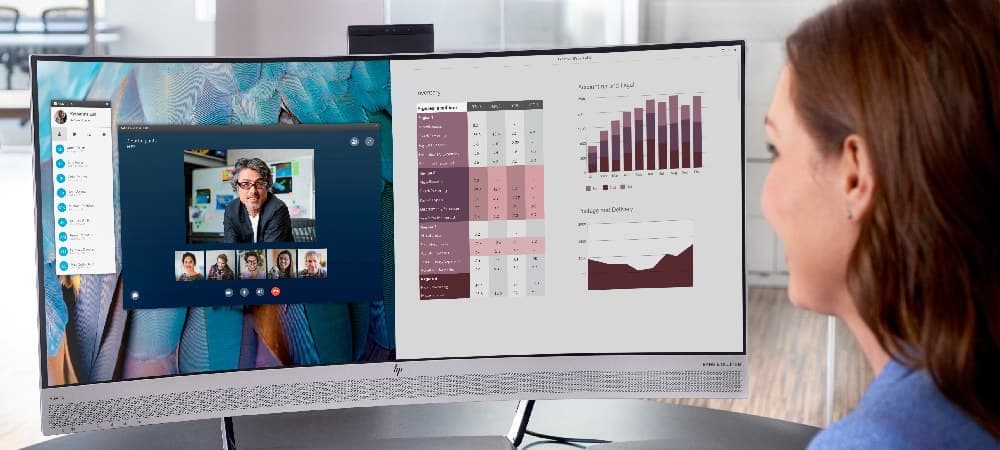
Dual Monitor Setup: How to Boost Your Productivity with Multiple Displays
Why Use a Dual Monitor Setup?
- Increased productivity: Studies have shown that using multiple monitors can boost productivity by up to 42%.
- Enhanced multitasking: Easily work on multiple applications or documents simultaneously across dual displays.
- Improved workflow: Seamlessly drag and drop items between screens.
- Better organization: Keep reference materials on one screen while working on another.
- Expanded screen real estate: Ideal for creative professionals, data analysts, and power users.
HP Support Resources
Access these helpful resources for setting up and troubleshooting multiple displays on your HP device.
Troubleshooting screen issues
Resolve common display problems on Windows 11 and 10
Display error troubleshooting
Fix black screen and display error codes
Resolving startup display errors
Fix display-related diagnostic errors during startup
Using HP Sure View privacy screen
Manage display privacy settings for your screens
How to Set Up Dual Monitors
Step 1: Check Your Computer’s Compatibility
Step 2: Gather the Necessary Equipment
- Two monitors
- Appropriate monitor cables (HDMI, DisplayPort, or DVI)
- A computer with multiple video outputs or a docking station
Step 3: Connect the Monitors
- Power off your computer and monitors.
- Connect each monitor to a power source.
- Connect the primary monitor to your computer’s video output.
- Connect the second monitor to another available video output.
Step 4: Configure Display Settings
- Power on your computer and monitors.
- Right-click on your desktop and select “Display settings” to choose display settings for your monitors.
- Windows should automatically detect your monitors. If not, click “Detect.”
- Under “Multiple displays,” choose “Extend these displays.”
- Arrange the monitors as they appear on your desk by dragging the icons.
- To set your main display, select the monitor you want to designate, then check the box that says “Make this my main display.”
- Adjust resolution and scaling settings as needed.
Optimizing Your Dual Monitor Setup
- Align monitor heights for ergonomic comfort.
- Use a dual monitor stand for a cleaner desk setup.
- Experiment with portrait orientation for one monitor.
- Utilize Windows 10/11 snap features for easy window management.
- Consider investing in matching monitors for a seamless experience.
- Arrange and align the other monitor properly to ensure smooth cursor movement and optimal performance.
- Extend or duplicate displays based on your needs and make sure the monitors are set up to avoid any issues during gaming or multitasking.
Laptop Screen Extenders: A Portable Alternative
- Quick setup and breakdown for mobile work environments
- Minimal desk space requirements
- Single-cable connectivity options
- Integrated mounting systems designed specifically for laptops
- Compatibility with a wide range of laptop models
HP Solutions for Dual Monitor Setups
HP Dual Monitor Bundles
HP P24 G5 FHD Monitor Dual Bundle
- Display Size: 23.8-inch (diagonal) x2
- Resolution: Full HD (1920 x 1080) x2
- Refresh Rate: 75 Hz x2
- Response Time: 5ms GtG x2
- Connectivity: HDMI, VGA, DisplayPort x2
HP Docking Stations
HP USB-C Dock G5
- Ports: 4 USB-A 3.0, 2 USB-C, HDMI, 2 DisplayPort, RJ45
- Power: Up to 100W laptop charging
- Video Support: Dual 4K displays
- Compatibility: USB-C enabled laptops
HP Monitors
HP E27q G5 QHD Monitor
- Display Size: 27-inch (diagonal)
- Resolution: QHD (2560 x 1440)
- Refresh Rate: 60 Hz
- Response Time: 5ms GtG
- Connectivity: HDMI, DisplayPort, USB-C
Troubleshooting Common Dual Monitor Issues
- Update graphics drivers
- Check cable connections
- Restart your computer
- Verify monitor compatibility
- Adjust display settings
- Check system settings: Access the system settings on your operating system to adjust monitor preferences. This includes configuring display resolution, power management for closing the laptop lid, and advanced display options for optimizing the viewing experience across multiple screens.
- Adjust taskbar settings: Customize the taskbar settings to manage the taskbar across multiple displays in Windows. For Windows 10 and Windows 11, you can show or hide the taskbar on secondary monitors and change the appearance of taskbar icons.


















